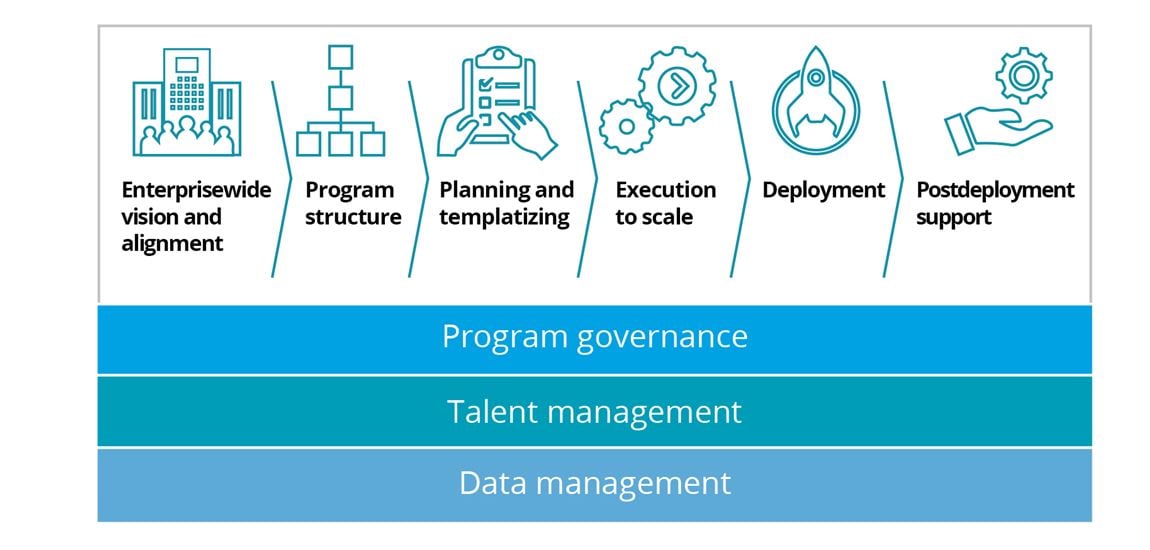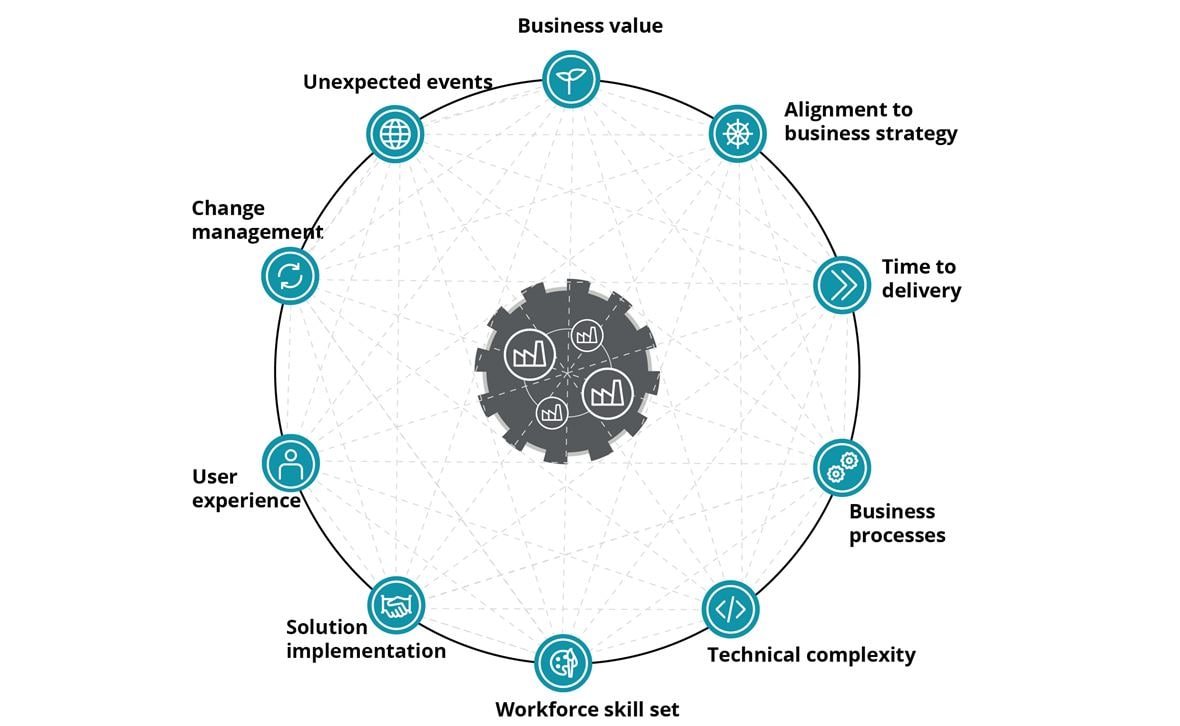Article
【Smart Manufacturing 2.0 series】
From one to many: Scaling the smart factory to a smart network
The COVID-19 pandemic has put unprecedented stress on global economies and highlighted as perhaps never before the importance of maintaining an agile supply chain and efficient manufacturing operations. Smart manufacturing systems, including industrial IoT, can play a larger role in the months and years ahead, offering organizations the ability to use their digital footprint to manage labor/ absenteeism risks, production scheduling complexities, and upstream and downstream supply chain risks. A network of smart factories could drive organizations’ overall competitiveness in the form of improved efficiencies and toplines—competitiveness that could be critical in the tough economic environment ahead.
The benefits of harnessing smart factory capabilities across digital supply networks can be significant, and organizations typically start small, create proof-of-value projects, and then aim to quickly scale across their factory network once the concept has demonstrated value. Starting small is a time-tested approach to success, but many companies run the risk of starting too small. This can make it challenging to scale these initial solutions more broadly to other facilities.
So how can companies move from a single smart factory implementation to a holistic, enterprise wide implementation—to which we refer as a smart network—while considering some of the local characteristics of the factory? In other words, how can companies scale globally, and execute locally, all the while minimizing disruption and the overall cost of ownership? In this article, we discuss:
- Challenges associated with scaling smart factory solutions
- Implementation components and techniques to address the challenges and lead to scaled adoption of the solution
- Considerations to keep the scale successful
What's holding companies back?
It is often challenging to scale smart factory solutions, including IoT technologies, more broadly across the network, for generally four reasons:
- Business model and operations challenges
- Technological challenges
- Talent and leadership challenges
- Data management challenges
Getting started with scaling
Scaling of smart factory solutions should be driven by a North Star: a common purpose, and a strong focus on value that is well-defined.
FIGURE 1: Smart factory scaling components
Scale a smart factory and its many different components or stages (figure 1): enterprisewide vision and alignment, program structure, planning and templatizing, execution to scale, deployment, and postdeployment support. The connective tissue across these components includes program governance and talent and data management, which play key roles all along.
Change management teams should understand the solution thoroughly and provide continuous training and support on the shop floor to address any questions workers may have before, during, and after an implementation.
FIGURE 2: Execution to scale inclues elements that maintain an equilibrium for the smart network
Considerations to keep the scale successful
Once the smart factory is scaled to multiple plants, organizations should turn their focus to longer-term business imperatives. Leaders should focus on key areas to keep the scaled operations running and successful in the long run as talent and tech readiness mature and organizational needs evolve, which includes leadership involvement, communication management, funding support and business continuity.
It's a marathon, not a sprint. Smart factory implementations present opportunities for operational improvements as well as top-line growth, and these benefits naturally compound with scaling to multiple plants. Use case selection for the proof-of- value development should be carefully curated to accelerate value realization, as it helps establish credibility of the program and plays a pivotal role in charting the success of the effort at the enterprise level. The program should be value-led, technology enabled, and people-centric to enable the enterprise to realize its full potential.




